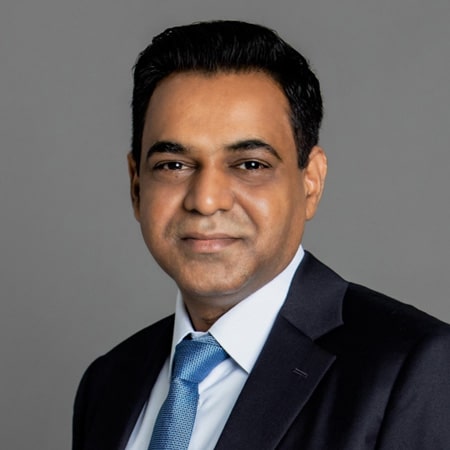“A treasury function can no longer content itself with the traditional core tasks of cash, liquidity and risk management,” says Steven Lenaerts, Head of Global Channels & Digital Onboarding, BNP Paribas. “The remit is expanding.”
This is a double-edged sword for treasurers in the Asia Pacific region. The status of a treasury function is steadily increasing, and with it, its role within a broader organisation. This brings influence. But treasurers must also ensure they have the resources and experience to stay abreast of everything new that they must address.
Treasurers are increasingly expected to create gains in productivity while keeping control of operational expenditure and proving they are adding value.
An increasingly vital business partner
On the cash and liquidity side, there is growing treasury involvement in commercial receivables, digital payments and e-commerce. On the risk management side, the expectation has expanded from financial to operational risk management, including cyber-fraud and insurance. In addition to treasurers’ increased involvement in working capital, more generally, issues such as digitalisation of business model, investor relations and sustainability are drifting into the treasury universe.

❝ That does not mean the historical tasks are no longer the responsibility of treasury, but fairly diverse activities are being added to the spectrum. That provides it with a more prominent place in the corporation. Treasury is becoming more and more of a business partner. ❞
This view is widespread. At a BNP Paribas treasury event in Singapore, a room full of treasurers were asked to predict the evolution of a treasurer’s role in the coming years. Would the status quo remain, with a focus on risk management and cash and liquidity? Or would the remit venture into new areas including working capital, sustainability and investor relations? 87% of the vote went to the second option.
Data, digital and the evergreen treasury priorities
Why are treasurers being asked to do so much more?
Regulators in APAC are driving the process of digitalisation – digital payment, request-to-pay systems and digital currencies – presenting a challenge for corporates to be ready in this fast-changing environment.
“Enhanced digitalisation and automation add a whole new dimension to the treasury function,” adds Anand Jadhav, Head of Cash Management Product for APAC at BNP Paribas. Data, in particular, empowers the treasury function with insights that are directly relevant to the progress of the overall organisation, which is why Jadhav says treasurers are increasingly being asked to contribute directly to corporate strategy. But data brings as many required adaptations as it does opportunities.

❝ It requires the implementation of a well-defined data strategy. It means understanding the sources of the data, defining the goals on what to retrieve from the data, and using the data to gain powerful insights and visualisation. ❞
“We all know taking advantage of data is not a free lunch,” Jadhav says. “It requires the implementation of a well-defined data strategy. It means understanding the sources of the data, defining the goals on what to retrieve from the data, and using the data to gain powerful insights and visualisation.” It also requires an overarching data governance framework to ensure the quality of data, and the correct use of it.
Huge benefits from data
This process offers great benefits, as data science will clearly help with cash forecasting, which Lenaerts refers to as “the evergreen of treasury priorities”. But it also has potential to assist with working capital, risk management, fraud detection, regulatory reporting and stress testing. Coupled with Robotic Process Automation (RPA), data science can automate manual processes and expedite insight extraction to help with report generation, freeing up treasury resources to devote to value-added tasks.
Data is only one technological area among many in a fast-evolving treasury environment. Application Programming Interfaces (APIs), Robotic Process Automation (RPA) solutions and instant payments are other examples directly relevant to treasury.
Solutions gaining traction
Many of these advancements are gaining traction in Asia, enabling homegrown solutions particularly in the payments space: the Request to Pay (RTP) model is gaining traction in markets like Malaysia, which gives control to the payee who, as a crediting agent, can initiate transactions, gaining faster access to funds and an improved liquidity position; other examples include alternative methods such as China’s domestic infrastructure useful on the C2B (consumer-to-business) front in creating an additional avenue for end customers to pay businesses in that market.
“There are technological solutions in abundance,” says Lenaerts. “But all of that also means that as a treasury organisation you need to uphold a certain level of investment to keep up with technological innovation. If you are not willing to do that, it’s not possible to take advantage.”
And this brings us back to the challenge of modern treasury. Technology is one of the most important levers to give treasuries productivity gains, improve their performance and elevate their standing within the organisation. But it also requires recognition of the role and the resulting investment in technology, followed up by concrete delivery.
Talent for a changing treasury
Even more important than technological investment is the need for human talent. As the idea of treasury expands, so too does the range of skills required to meet that expanded remit. “We are looking at legal skills, fiscal, regulatory, technology, data, digital, fraud,” says Lenaerts. “It becomes a very diverse spectrum of skills and competences that will be required in treasury.”
One challenge here is to ensure a flow of young people into the profession. In Singapore and Hong Kong, Jadhav notes that “with the new generation of recruits, highlighting the digital mindset required alongside the fundamental aspects of treasury management renders the profession more attractive.”
Those who do join will find a treasury function elevated beyond its roots in terms of reach, sophistication and influence. Treasurers have a crucial role to play in an organisation even more than ever before.
